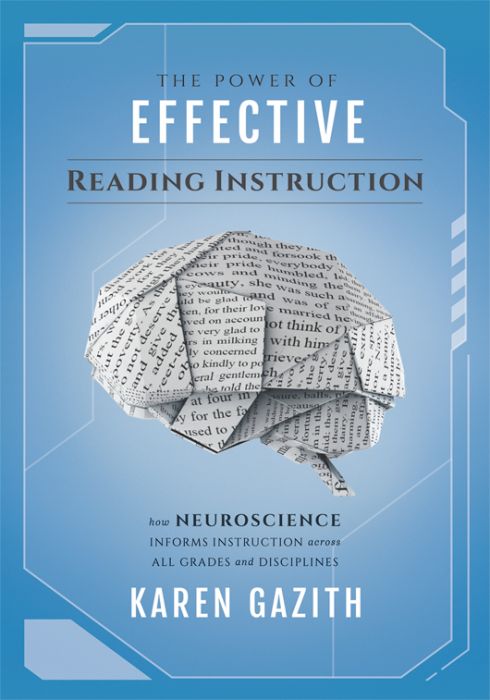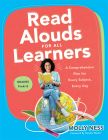
The Power of Effective Reading Instruction
How Neuroscience Informs Instruction Across All Grades and Disciplines
Karen Gazith holds a strong belief that teachers play a critical role in the success of their students. She emphasizes the need for effective instruction for all and intervention for those in need. This guide offers evidence-based practices for reading instruction that transform student proficiency across all content areas.
Effective reading strategies that transform readers across all content areas
Without building strong reading skills, students often struggle to perform well in school and in life. Author Karen Gazith, through neuroscience, research-supported tools, and strategies, explores how children learn to read and how it should inform effective reading practices in schools. K–12 educators with this guide will find resources and reproducible tools to implement reading instruction and interventions, no matter the subject taught.
K–12 teachers and leaders will:
- Learn what neuroscience research says about how children learn to read, why some students struggle to read, and how this knowledge informs best practices
- Understand the big five of reading and how to apply each element in their teaching
- Gain strategies that target fundamental reading skills, like decoding and fluency
- Master instructional approaches like acceleration, push-in and pull-out, and anchor activities to support students who are off track
Related Topics
Brain-Compatible LearningInstructionLiteracy
Additional Information
“This book does more than explain the science of reading. It gives a fulsome overview of structured literacy and the science of reading through a focus on the ‘big five’ as set out by the National Reading Panel so that all teachers understand their role in improving literacy and can take action. The explicit teaching information is evidence based and timely in the current conversation surrounding teaching reading.”
“This well-written book makes a unique impact by providing both a research base and an application component for teachers and leaders at all grade levels. The content-specific strategies are easy to implement , and the examples and reflection components the author provides effectively reinforce the learning. A useful tool for educators!”
When can I access my eBook? Your eBook will be accessible through VitalSource once your payment has been processed.*
*When using a check or purchase order, the order submitted online will not be processed until Solution Tree receives the check or a copy of the signed official purchase order. Your purchase order must note payment terms of net 30 days. We cannot process purchase orders that do not note these payment terms. Please submit all payments to [email protected].
How do I access my eBook?
To access your eBook:
- Create a free VitalSource account by visiting VitalSource.com. If you already have a VitalSource account, please log in to your account.
- Paste the redemption code that Solution Tree will email you in the “Redemption Code” field on VitalSource.com/Redeem. (Note: You can also access your redemption code within your Solution Tree account under the “eBook” section.)
- Click “Redeem.”
- Enjoy! Once your code is redeemed, your book will be added to your VitalSource Bookshelf and can be read anytime, anywhere.
What are the technical requirements for accessing the eBook? A VitalSource account is required. To sign up for your free account, please visit VitalSource.com.
What if I have trouble accessing my eBook? Please contact VitalSource by emailing [email protected] or by utilizing their Live Chat feature.
What are the shipping and handling costs? There are no shipping or handling costs associated with eBooks. For paperback and hardcover book purchases, standard shipping costs apply. Please visit the Product Orders page for more information on shipping and handling costs.
Can I purchase multiple copies of the same eBook? Bulk orders are not currently available through the website. Website purchases are limited to one eBook per title, per account. If you want to order multiple copies of an eBook, please contact customer support at [email protected].
What if I need to request a refund on my eBook order? RETURN POLICY: We are unable to accept returns or cancel previously placed eBook orders.



